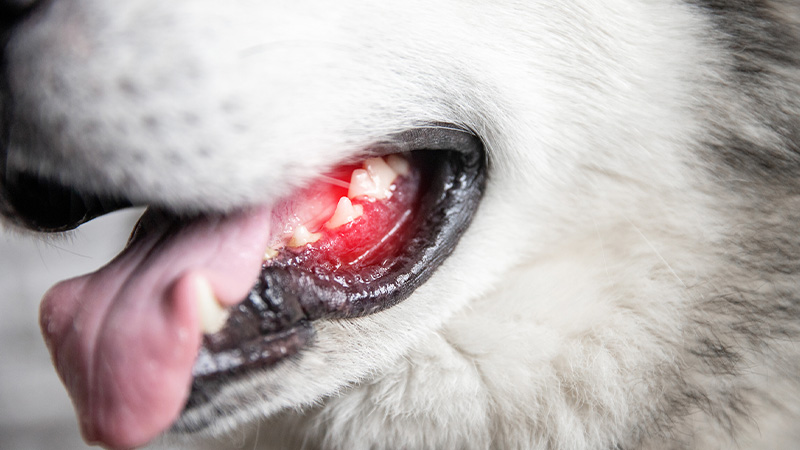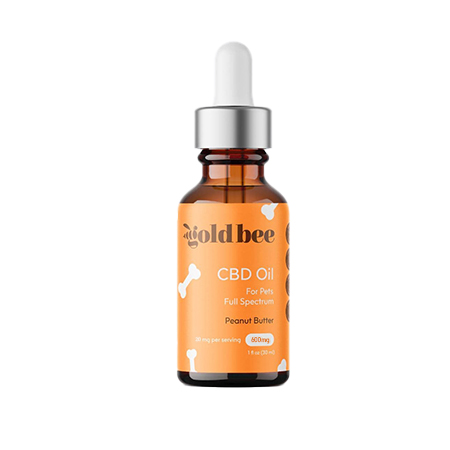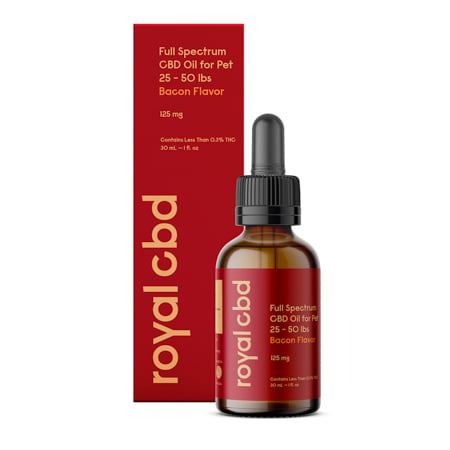What Can I Give My Dog for Tooth Pain Relief?

If you’ve ever suffered from tooth pain, you’ll know what your dog is going through. While humans are usually aware of the reasons behind their pain, the same can’t be said about our canine companions, so tooth pain is even worse for them.
Tooth pain requires veterinary care because it may indicate an underlying health problem, such as cavities, gum inflammation, or dying tooth.
You can help provide pain relief for your dog by giving them one of the natural remedies we will discuss in this article.
From CBD oil to dental creams and OTC painkillers, we’ll leave no stone unturned to help reduce discomfort in your four-legged friend.
Signs of Tooth or Mouth Pain in Dogs
As a caring parent, it’s normal to worry about your pet children. There’s no better feeling than seeing them run toward you with a big smile on their face to lick your face.
After all, dogs are part of the family.
There are a few common behaviors exhibited by dogs with tooth pain. While pain meds may reduce the discomfort in the short run, it’s always best to seek veterinary care.
Here are certain behaviors to look out for when you suspect your dog may be suffering from tooth pain.
Bad Breath
Dog owners usually treat bad breath as something usual, but the odor doesn’t come out of the blue. It’s an indicator that a dog may be suffering from tooth decay or periodontal disease. Both conditions can cause severe pain to your dog.
Loss of Appetite
If you’ve suffered from tooth pain before, you know eating is one of the last activities on your mind. Dogs, too, can lose appetite and suddenly stop eating. This is one of the most obvious behaviors caused by tooth pain.
Your dog may also whine or spit out its food after trying to chew it.
However, loss of appetite may not only be a sign of tooth pain. Dog health should be approached holistically, with the supervision of their veterinarian.
Excessive Drooling
Dogs tend to drool when they’re chewing on treats or playing with toys.
But when they suffer from tooth pain, you may notice that they drool excessively.
A possible explanation is that the salivary glands increase their activity in the event of an injury or pain in the mouth.
Sometimes, there may be blood in the dog’s saliva. If this happens to your dog, take them to the vet immediately.
Why do Dogs Suffer from Tooth Pain?
The dog’s mouth and nose play the same role for dogs as hands do for humans – it’s their main asset for exploring and understanding their surroundings, navigating through their terrain, and picking up objects.
With such important functions, dogs’ teeth are more prone to wear and tear than other parts of their body (maybe except for the paws).
According to statistics, up to 85% of pets over three years old would benefit from visiting a pet dentist regularly.
Tooth pain beings if the damage is left untreated or not monitored. The most common reasons behind dental pain include:
- Swollen gums
- Breakages
- General lack of hygiene
If issues continue to bother the dog, it may develop an infection. Take your dog to the vet before it’s too late.
What Can I Give My Dog for Tooth Pain Relief?

While it’s challenging to tackle the cause of tooth pain at home, you can take several steps to help your dog manage the discomfort before they receive treatment from the vet.
Human medications shouldn’t be used with dogs because their single serving is adjusted to the weight of humans.
However, there are certain home remedies that can effectively alleviate pain, reduce inflammation, and prevent the growth of bacteria in the trouble spot.
Benadryl
Your vet may recommend Benadryl and other antihistamines, the most widely used medications in canines.
While antihistamines don’t cure pain, they provide mild anti-inflammatory and sedative effects – making them a viable option for short-term relief.
Human Aspirin
Human aspirin is another common medication prescribed by vets to dogs with tooth pain. However, some pets may have adverse reactions to the active ingredient, so be sure to closely monitor your dog’s behavior and give them up to 10 mg of aspirin per pound of body weight twice a day.
Again, check with your vet before giving your dog aspirin for tooth pain.
Can I Give My Dog CBD Oil for Tooth Pain?
CBD oil is a health supplement derived from hemp plants. CBD, the main active ingredient, is a potent anti-inflammatory and painkiller.
Its therapeutic properties stem from interacting with the endocannabinoid system (ECS) – the master regulatory network in all mammals.
Best CBD Oils for Dogs
CBD products are unregulated, so dog parents need to do their research before picking up the best CBD oils for dogs with tooth pain.
The process of extracting CBD should be done from organic hemp and should be third-party tested for potency and purity. Reputation is another essential factor because it tells you a lot about the company’s approach to customers.
In a rush?
Here are the top 2 best CBD brands that make premium-grade products at reasonable prices. We’ve been using them for over 2 years with our dogs, and they do a great job with pain management.
1. Royal CBD
Get 15% off all Royal CBD products. Use code “CFAH” at checkout.
| Pros | Cons |
|
|
2. Gold Bee
| Pros | Cons |
|
|
How CBD Works for Pain
CBD can reduce tooth pain in dogs by:
- Increasing their natural pain threshold
- Reducing inflammation
- Weakening pain signals from nerve cells
Unlike THC, the other major compound of cannabis, CBD won’t get your dog high. CBD is a soothing agent, but it doesn’t interact with cannabinoid receptors in the brain.
Instead, CBD modulates the ECS, helping it maintain homeostasis throughout the body.
Different Forms of CBD
CBD usually comes in the form of oil, but it’s also available as capsules, soft chews, and creams.
Here’s how dog parents administer CBD to their children:
- Soft Chews – this form of CBD is a smart way to provide a daily serving to your dog in a fun and tasty way. Just make sure that these CBD pet treats are made with all-natural, biologically appropriate ingredients.
- CBD oil – oils come in glass bottles, with a dropper attached to them for precise dosing. They’re taken under the tongue to improve absorption and ensure faster relief from pain.
- CBD capsules – this is the least common format because capsules don’t have an enticing taste, not to mention it may be difficult for your dog to swallow them. Alternatively, you can break them apart and add the powder to the dog’s food or water, but this isn’t an option with softgel capsules; you’d need traditional pills.
How Much CBD Should I Give My Dog?
Every dog is different, so the dosage should be adjusted to their weight. The optimal dose of CBD for dogs depends on several factors, such as the dog’s size, metabolism, and natural tolerance to cannabinoids.
A good rule of thumb is to start with 2 mg per every 10 pounds of body weight. For example, if your dog weighs 30 pounds, the ideal amount would be 6 mg.
You can always ask a holistic veterinarian about dosing CBD. It’s also recommended to follow the manufacturer’s instructions and check up with the veterinarian at some point of supplementation.
Should You Give Your Dog NSAIDs?
Non-Steroidal Anti-Inflammatory Drugs (NSAIDs) are a class of pain medications, including Ibuprofen, Carprofen, Firocoxib, Deracoxib, and Meloxicam.
While these medications may be good for temporary pain relief, they don’t treat the root of the problem.
It’s also worth noting that NSAIDs shouldn’t be used without consulting a veterinarian due to the risk of overdose.
Like all medications, NSAIDs have possible side effects, such as:
- Vomiting
- Tarry stool
- Diarrhea
- Skin irritation
- Loss of appetite
- Tiredness
- Stomach pain
Do I Need to Brush My Dog’s Teeth?

Yes, your dog’s teeth are one of its vital tools, so anything you can do to help them maintain oral health is definitely worth it.
Some dogs are naturally responsible when it comes to taking care of their dental health by chewing on bones, branches, and raw meat.
As a dog parent, treat your dog’s teeth maintenance routine as you would treat your children’s health.
They will surely benefit from a manual brushing once every two weeks.
How to Prevent Tooth Pain in Dogs
Here are five dead-easy steps to prevent tooth pain and keep your dog’s mouth in good health:
1. Run A Regular Mouth Check
Doing so will help you find signs of decay or infection. Ideally, your dog will have light pink or black gums with no red areas. While dog breath isn’t the most pleasing aroma, it shouldn’t be repulsive.
When it comes to teeth, check for signs of discoloration. Brown dots, green tinges, or yellowing can indicate the growth of harmful bacteria.
2. Give Your Dog Bones and Hard Treats
Both bones and hard treats work great as a natural toothbrush, not to mention you can reward them with these foods after the desired behavior.
While you may consider it strange that dogs are brushing their own teeth, the majority of their chewing serves exactly that role. Chewing on hard items helps dogs remove plaque from their teeth.
3. Ensure a Tooth-friendly Diet
Dogs are natural hunters and carnivores. They thrive on meat, organs, occasional berry fruits, and other animal-based ingredients.
Meat and bones are particularly beneficial for your dog’s tooth health. That’s because live enzymes from these products help dogs maintain a clean oral environment.
4. Ask Your Vet for Professional Cleaning
Your dog is less likely to suffer from tooth pain if you give them a regular check-up with the vet.
Your vet will be able to notice warning signs and potential issues with the teeth, providing the know-how and the right treatment to remove bacteria more efficiently than your dog.
5. Steer Away From Toothpaste Made for Humans
It may sound like a dead giveaway, but it’s super important: human products are made for humans for a good reason. They shouldn’t be used with dogs because they can potentially cause serious damage to your dog’s teeth and digestive system.
Most human toothpastes contain fluoride – an extremely dangerous toxin for dogs.

Key Takeaways on How to Treat Tooth Pain in Dogs
A dog suffering from tooth pain will show some telltale signs, such as excessive drooling, loss of appetite, and bad breath.
If you suspect tooth pain is the cause of your dog’s discomfort, take them to the vet to receive an accurate diagnosis. The above symptoms may indicate not only tooth pain but also an underlying health condition.
In the meantime, you can use one of the aforementioned home remedies for tooth pain management. We don’t recommend conventional painkillers because they’re too risky for long-term use in dogs.
Instead, try a natural remedy like CBD oil, which is a biologically appropriate ingredient supporting healthy immune responses and easing pain.
References:
- Deutsch D. G. (2016). A Personal Retrospective: Elevating Anandamide (AEA) by Targeting Fatty Acid Amide Hydrolase (FAAH) and the Fatty Acid Binding Proteins (FABPs). Frontiers in pharmacology, 7, 370 [1].
- Nagarkatti, P., Pandey, R., Rieder, S. A., Hegde, V. L., & Nagarkatti, M. (2009). Cannabinoids as novel anti-inflammatory drugs. Future medicinal chemistry, 1(7), 1333–1349 [2].
- Argueta, D. A., Ventura, C. M., Kiven, S., Sagi, V., & Gupta, K. (2020). A Balanced Approach for Cannabidiol Use in Chronic Pain. Frontiers in pharmacology, 11, 561 [3].
